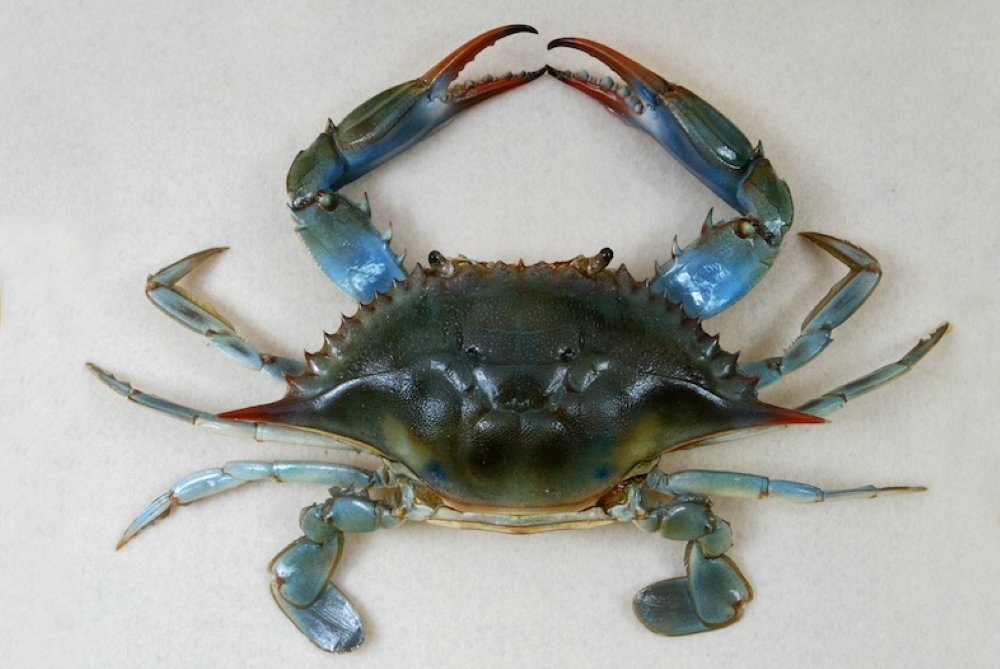
Photo by Wendy Kaveney, Courtesy of The Children's Museum of Indianapolis
It's not likely the crab was part of a St. Paddy's Day Pub Crawl.
A Chesapeake Blue Crab was spotted on a beach in Dublin, Ireland, last month and it was the first time that species has ever been recorded in the area. Then, on March 9, a Chesapeake Blue Crab claw was discovered in the same location of Dollymount strand. Although researchers are hoping this is an isolated incident (even suggesting that the second claw could have belonged to the same crab), they are still a bit concerned.
A common sight in Maryland and Virginia, the states surrounding the Chesapeake Bay, having one of these tasty critters show up on the other side of the Atlantic could disturb the ecosystem there. The Chesapeake Blue is a larger, more aggressive crab than what is found around Ireland and could easily take over if they took root there- especially when considering that females lay up to six million eggs a year.
In response, the Biodiversity Data Center in Ireland has asked citizens to report any sightings of potentially more Chesapeake Blues so they can keep tabs on the situation.
Have you spotted a Blue crab on our shores lately? If so, please report suspected sightings with photo if possible https://t.co/wFo52ArWsi Trying to find out if this was a one-off occurrence or are there more out there #ReportInvasives Don't release non-native species to the wild pic.twitter.com/UWZOJGNdro
— Biodiversity Ireland (@BioDataCentre) March 9, 2021
It's still unknown just how the crab got there. Genine McClair, the Blue Crab Program Manager for Maryland told ABC 47 that it's very unlikely the crabs swam all that way (it's unlike their typical migration pattern), but that they "have already invaded the Mediterranean sea, and the coast of Spain," so it could have come from that area. However, speaking with The Irish Times, Dave Wall- a citizen science officer at the Biodiversity Data Center said "It is more likely that someone released it, thinking they were doing the right thing.”
Whatever the case, the waters surrounding Ireland are generally too cold for the Chesapeake Blue Crab and that would make it much harder for them to thrive in that environment. However, US Lobsters (also larger and more aggressive) have recently been found in lobster pots in the area worrying wildlife experts about their potential impact. The center continues to stress to the public the importance of not releasing non-native species into the wild.
March 25, 2021 at 11:09PM
https://ift.tt/3lT7GUp
Chesapeake Blue Crab Found in Ireland - Our Community Now at Colorado
https://ift.tt/2MkGRbk
Crab

No comments:
Post a Comment